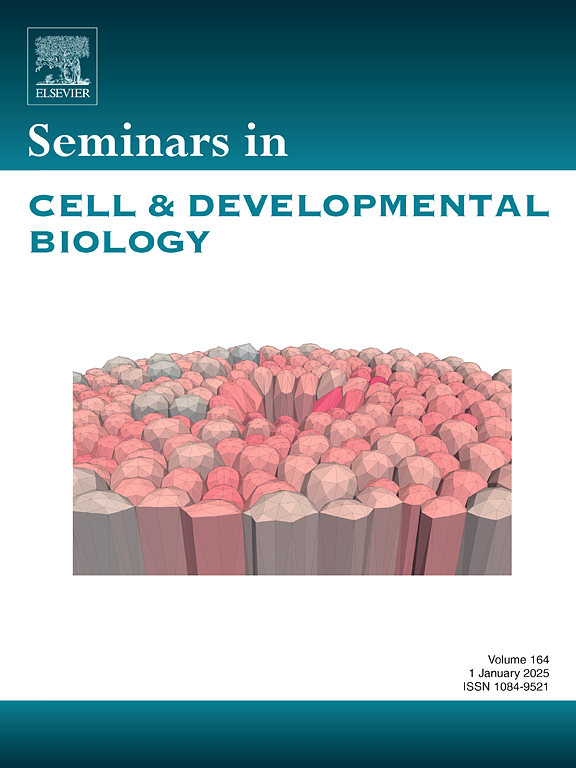Mechanical mechanisms of morphogenesis as potential substrates for evolutionary change
IF 6
2区 生物学
Q1 CELL BIOLOGY
引用次数: 0
Abstract
The first quarter of this century has seen a resurgence of interest in the mechanical and physical mechanisms that drive cellular behaviors in the context of morphogenesis. Far from being a new discovery, the fact that the material properties of cells and the physical forces that they exert and experience must play decisive roles in development, was an important part of the field of experimental embryology well over a century ago. Following the birth of molecular biology, and the development of live imaging approaches that can capture the dynamics of both cellular properties and materials, and the activity of genes and gene products, the current manifestation of this field promises to link mechanical and molecular genetic mechanisms. Here we review recent advances in understanding the relationships between mechanical and molecular genetic mechanisms, and suggest paths forward that could yield answers to the pressing questions of whether and how evolutionary forces act not only on functional morphologies, but also on the mechanical forces that create them.
形态发生的机械机制作为进化变化的潜在底物
本世纪头25年,在形态发生的背景下,对驱动细胞行为的机械和物理机制的兴趣重新抬头。细胞的物质特性以及它们所施加和经历的物理力在发育过程中一定起着决定性的作用,这一事实远非一个新发现,早在一个多世纪以前,它就是实验胚胎学领域的一个重要组成部分。随着分子生物学的诞生,以及实时成像方法的发展,可以捕捉细胞特性和材料的动态,以及基因和基因产物的活性,该领域目前的表现有望将机械和分子遗传机制联系起来。在这里,我们回顾了在理解机械和分子遗传机制之间的关系方面的最新进展,并提出了可以回答进化力是否以及如何不仅作用于功能形态,而且作用于创造它们的机械力这一紧迫问题的前进道路。
本文章由计算机程序翻译,如有差异,请以英文原文为准。
求助全文
约1分钟内获得全文
求助全文
来源期刊
CiteScore
15.10
自引率
1.40%
发文量
310
审稿时长
9.1 weeks
期刊介绍:
Seminars in Cell and Developmental Biology is a review journal dedicated to keeping scientists informed of developments in the field of molecular cell and developmental biology, on a topic by topic basis. Each issue is thematic in approach, devoted to an important topic of interest to cell and developmental biologists, focusing on the latest advances and their specific implications.
The aim of each issue is to provide a coordinated, readable, and lively review of a selected area, published rapidly to ensure currency.

 求助内容:
求助内容: 应助结果提醒方式:
应助结果提醒方式:


